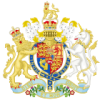Sunderland
Sunderland is a port city located at the mouth of the River Wear in the metropolitan county of Tyne and Wear in northeast England. Historically, the port traded coal and salt, and from the fourteenth century it had been a hub of shipbuilding. It was the first British town to suffer a cholera epidemic in 1831. Related BRANCH article: Pamela K. Gilbert, "On Cholera in Nineteenth-Century England."
Coordinates
Latitude: 54.898229549051
Longitude: -1.424843072891
Longitude: -1.424843072891


